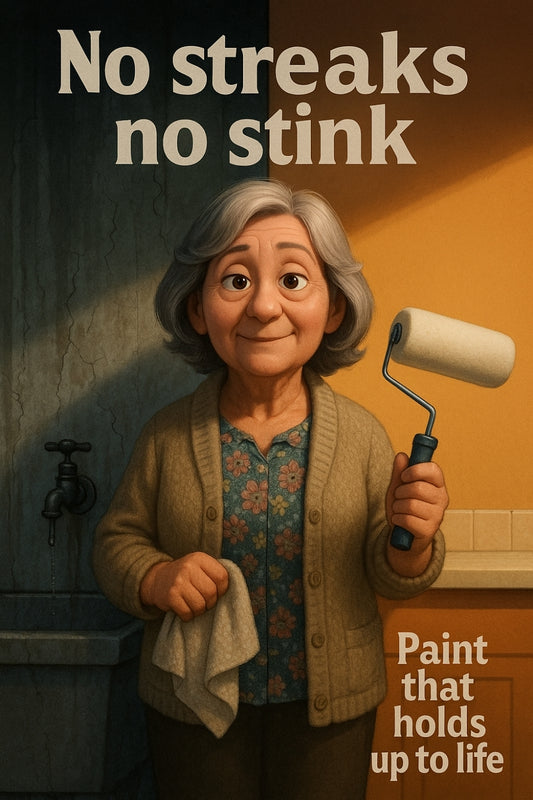
Mastering Cut-In Lines with Confidence
Share
Cut-In Lines Like a Pro: Precision Painting Made Simple
There's nothing more satisfying than a crisp, clean cut-in line when painting a room. That perfect edge between the ceiling and the wall or where two colours meet can make all the difference between a professional-looking job and a messy one. But let's be honest – getting that flawless line can feel like an art form. If you've ever struggled with wobbly edges or dreaded the prep work, you're not alone. The good news? With the right tools and a touch of know-how, you can master the technique with confidence. Let's make those lines sharp enough to turn heads!
The Right Brush: Your Not-So-Secret Weapon
Before you even dip into the paint tin, your brush choice can set you up for success. A top-quality cutting-in brush is designed for precision, making it easier to control the paint flow and avoid accidental smudging. Look for an angled sash brush with soft yet firm bristles that hold paint well without dripping.
Tape or No Tape? That is the Question
Some swear by painter’s tape, while others prefer the freehand method. When taping, press down firmly to seal the edges for a sharp finish. But if you're confident with a steady hand, you can skip the tape altogether. Whichever approach you choose, always paint with patience and a smooth, controlled motion.
How to Cut-In Like a Pro
- Start with a steady hand: Grip your brush near the base for better control.
- Work from the edges outward: Load the brush lightly and begin about a centimetre away from the edge, then slowly work towards the line.
- Keep a consistent angle: Holding the brush at the same angle ensures a steady line.
- Feather it out: Blend the edge into the main painted area to avoid noticeable lines once the paint dries.
Products to Help You Ace Cut-In Lines
It helps to have the right paint for effortless coverage and smooth application. Haymes Paint is a fantastic option, offering a formula designed for crisp finishes and strong adhesion. Whether you’re painting over existing colour or working on fresh walls, a good paint product makes all the difference.
Common Mistakes and How to Avoid Them
- Too much paint on the brush: Wipe off excess before starting to prevent drips.
- Rushing the job: Slow, steady strokes lead to better results.
- Painting with shaky hands: If necessary, rest your hand lightly against the wall for extra steadiness.
Painting is an art, but it’s also a skill anyone can master. With the right tools, a little practice, and the perfect paint, you’ll get those cut-in lines looking crisp and professional in no time. And don’t forget—if you need expert advice or the best painting supplies, Strathalbyn H Hardware is here to help!
Happy painting!
Candeece

Stay Connected
Follow our Facebook Page: Strathalbyn H Hardware on Facebook



